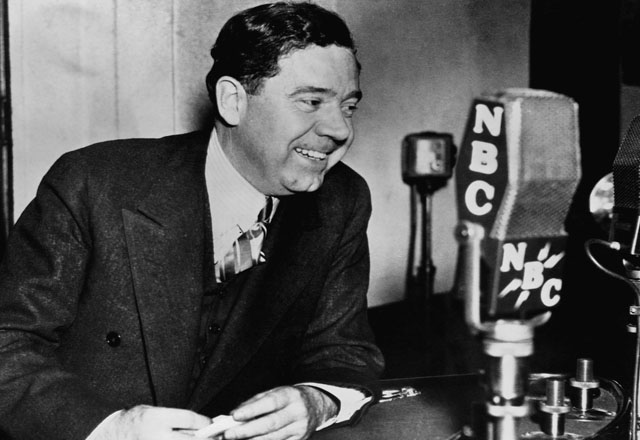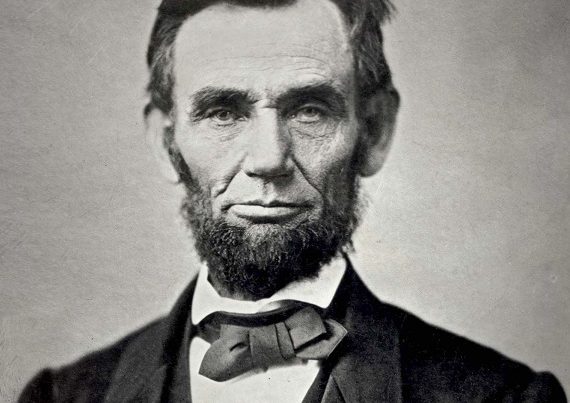Lincoln’s War established a permanent, centralized regime of crony capitalism for the formerly federal U.S. In the centralized U.S., real power is in the hands of big business and big banks that use government to protect and increase their own private profit and wealth.
Lincoln implemented Henry Clay’s “American Plan”, without giving it a name. At the time, however, free enterprise worked well in the U.S., and the tax money Lincoln shoveled to corporations merely added to their profits. It benefited America’s emerging “Robber Barons”, but there was a lot left over for average working stiffs and living standards rose in consecutive boom and bust business cycles.
Since Lincoln, the U.S. economy has been directed by congresses and presidents for the benefit of major corporations and plutocrats. These politically-connected plutocrats looted America with increasing efficiency and imagination and caused a political reaction to develop which we know as populism. From the late 1800s to 1935, public support for populism grew, and populism became a threat to the country’s plutocrats and political establishment.
Populists, from the 19th Century on, have wanted to regulate corporations to prevent monopolies and price fixing. They advocate some wealth re-distribution through taxation to prevent vast fortunes accumulating in the hands of few people while most people have only what is left. Vast fortunes owned by very few are also seen as dangerous for representative democracy.
Among populist political organizations that emerged was the Greenback Party from 1874 to 1889. It fielded presidential candidates in the elections of 1876, 1880, and 1884, and then faded away.
In the early1890s, the Populist Party emerged with support from Midwestern and Southern farmers and some labor unions who denounced the U.S. economic system in which “the fruits of the toil of millions are boldly stolen to build up colossal fortunes for a few”.
In those days, Populists wanted to nationalize railroads, break up big trusts, which restricted price competition, and get rid of the gold standard, which restricted money supply. They also advocated an eight-hour workday, women’s suffrage, and a progressive income tax. In 1892 Populist presidential candidate James B. Weaver won 8.5% of the U.S. vote.
Then one Populist faction wanted to merge with the Democrats and another wanted to remain independent. The fusionists rallied behind 1896 Democratic presidential candidate William Jennings Bryan, who condemned the gold standard and restricted money. He lost that election and then two more, but was the first leader of a major party to advocate permanent expansion of the U.S. government’s powers so that it could serve the well-being of ordinary Americans.”
Populism had swept from Dixie up into the Canadian prairie and had a significant effect on Canada’s national politics because of the more democratic legislative arrangement, the greater ability citizens there have to start viable political parties, and the ability party members have to nominate their candidates.
In the U.S., the Progressive Party of 1912 was formed by former Pres. Theodore Roosevelt after he lost the Republican Party’s nomination. The party proposed reforms favorable to working people, the elderly, unemployed, and disabled. The preamble to its platform stated that, “This country belongs to the people who inhabit it. Its resources, its business, its institutions and its laws should be utilized, maintained or altered in whatever manner will best promote the general interest.”
The party also promised that, “believing that a free people should have the power from time to time to amend their fundamental law so as to adapt it progressively to the changing needs of the people, pledges itself to provide a more easy and expeditious method of amending the Federal Constitution.”
The Progressive Party attracted some leading reformers, but Roosevelt lost the election, the party failed to win many offices, and it had faded away by 1914.
The next major populist was Robert LaFollette Sr. of Wisconsin, who led a movement that the press called “progressive” However, LaFollette’s policies were populist, for he opposed railroad trusts, political bossism, World War I, and the League of Nations. He ran for the U.S. presidency in 1925 as the nominee of his own Progressive Party and won 17% of the U.S. popular vote. LaFollette died in June 1925.
During the 1920s and 1930s, populist Huey Long rose to elected political power in Louisiana where he served as governor from 1928 to 1932 and then as one of Louisiana’s U.S. senators from 1932 until he was assassinated in 1935. Huey Long denounced the wealthy and banks and called for a “Share Our Wealth” program. As the political leader of Louisiana, he had many supporters statewide and was willing to act forcefully to further his declared policies. He had also gained significant grass-roots support across the U.S. by the time he was assassinated.
Because the U.S. was mired in the calamitous Great Depression, Long gained a national audience. When he said that the 1930s depression was caused by the concentration of more and more wealth in the hands of fewer and fewer people, his message resonated with many Americans. He proposed wealth redistribution measures in the form of a net asset tax on corporations and individuals and use of the increased tax revenue to reduce poverty and homelessness.
Long’s “Share Our Wealth” plan called for the U.S. government to confiscate the fortunes of anyone with more than $8 million in wealth (about $120 million in 2015 dollars) to provide a $5,000 annual income ($71,450 in 2015 dollars) and health care for all American families. To stimulate the economy, he advocated U.S. spending on public works, schools and colleges, and old age pensions. He was an outspoken critic of the Federal Reserve System’s policies.
Under Long’s leadership, Louisiana’s hospitals and educational institutions were expanded, a system of charity hospitals was created, which provided health care for the poor, massive highway construction and toll-free bridges brought an end to rural isolation, and free textbooks were provided for school children.
America’s plutocrats and political establishment hated and feared Huey Long. Pres. Franklin Roosevelt saved American plutocrats from Long’s tax proposals by implementing the public works and old age pension parts of Long’s proposal and getting the U.S. into World War II, which made plutocrats wealthier.
However, before that happened, American plutocrats outraged over Huey Long’s tax proposals, circulated propaganda in the print press and on radio, which they owned, that described Long a danger to democracy. Long was probably assassinated because of this propaganda.
Once populism ceased to be a political threat, plutocrats and their corporations continued to find ingenious ways to increase their profits, often without producing anything but fluctuations in stock or bond prices.
A type of state capitalism* gained complete control of the U.S. government and economy after World War II during a crisis that included both economic stagnation and inflation. That was when the military-industrial relationship was created to stimulate economic growth during Pres. Harry Truman’s administration. That stimulation was called defense spending and military-related spending and wars have been used since to try to keep the U.S. economy growing.**
The U.S. has had, since 1913, a central banking system, the Federal Reserve System, which is controlled partly by private banks. Unofficially, private banks totally control the system,because of their influence with elected U.S. office holders. Then in 2010, the U.S. Supreme Court gave corporations the same constitutional protections and rights as people. This is a peculiarly U.S. version of fascism, in which corporate interests are parts of U.S. governance.
Fascism may be either a constitutional system in which the state and corporate leadership are merged, or an economic system run for the benefit of corporations. The form it has taken has been different in each country in which it has existed and reflects each country’s cultural patterns. The U.S. form is peculiarly indigenous and fulfills Huey Long’s forecast, made during the 1930s economic depression, that, “When fascism comes, it will come wrapped in the American flag.”
In 2016, Bernie Sanders, a self-described “democratic socialist,” castigated income inequality and the billionaire class, which was populist talk. Some other policies, however, were not: He promised to pay off loans for university graduates that have invested in educations that left them unable to re-pay their loans and earn livings, and advocated using the U.S. government to force race-based social changes in society.
Donald Trump, the man who beat Sanders, is most often described by the press as a populist. His rhetoric has been populist, but, thus far, his economic policies have been a continuation of military-industrial, trickle-down policies designed to stimulate the U.S. economy, but not to immediately benefit working Americans.
Trump’s anti-establishment, populist supporters remain loyal, while his opponents seethe with anger about everything that he says or does. Soros-types no longer finance large-scale anti-Trump demonstrations, university snowflakes no longer hide in anti-free-speech shelters, U.S. border-control laws are being enforced, and blacks no longer riot with a president as their cheer leader. Trump’s supporters reckon this is positive, but will it be enough to postpone a populist fire storm?
The kindling is there. Wages in the U.S., after taking inflation into account, have stagnated for more than three decades. The Congressional Budget Office reported that, in 2013, the top 10% of U.S. families (those with at least $942,000) held 76% of total U.S. wealth, and averaged $4 million. Other families in the top 50% accounted for 23% of U.S. wealth and averaged $316,000 per family. That left 1% for the bottom 50% of the population, in which average wealth for families, in the 26th to 50th percentiles, was $36,000. Families in the bottom quarter had zero wealth and an average debt of $13,000.
*State capitalism, as used here, means a relationship between government and private capitalism, in which private capitalists produce for both a guaranteed market and profit. An example of this is the military–industrial complex, in which share-holder- and privately-owned corporations and firms receive government contracts that include guaranteed profits, but are not subject to competitive market discipline.
**Argentine Pres. Nestor Krischner said that U.S. Pres. George W. Bush told him in 2004, during a 50-minute-longt meeting, in Monterrey, Mexico, that all U.S. economic growth has been encouraged by wars.








4 Comments